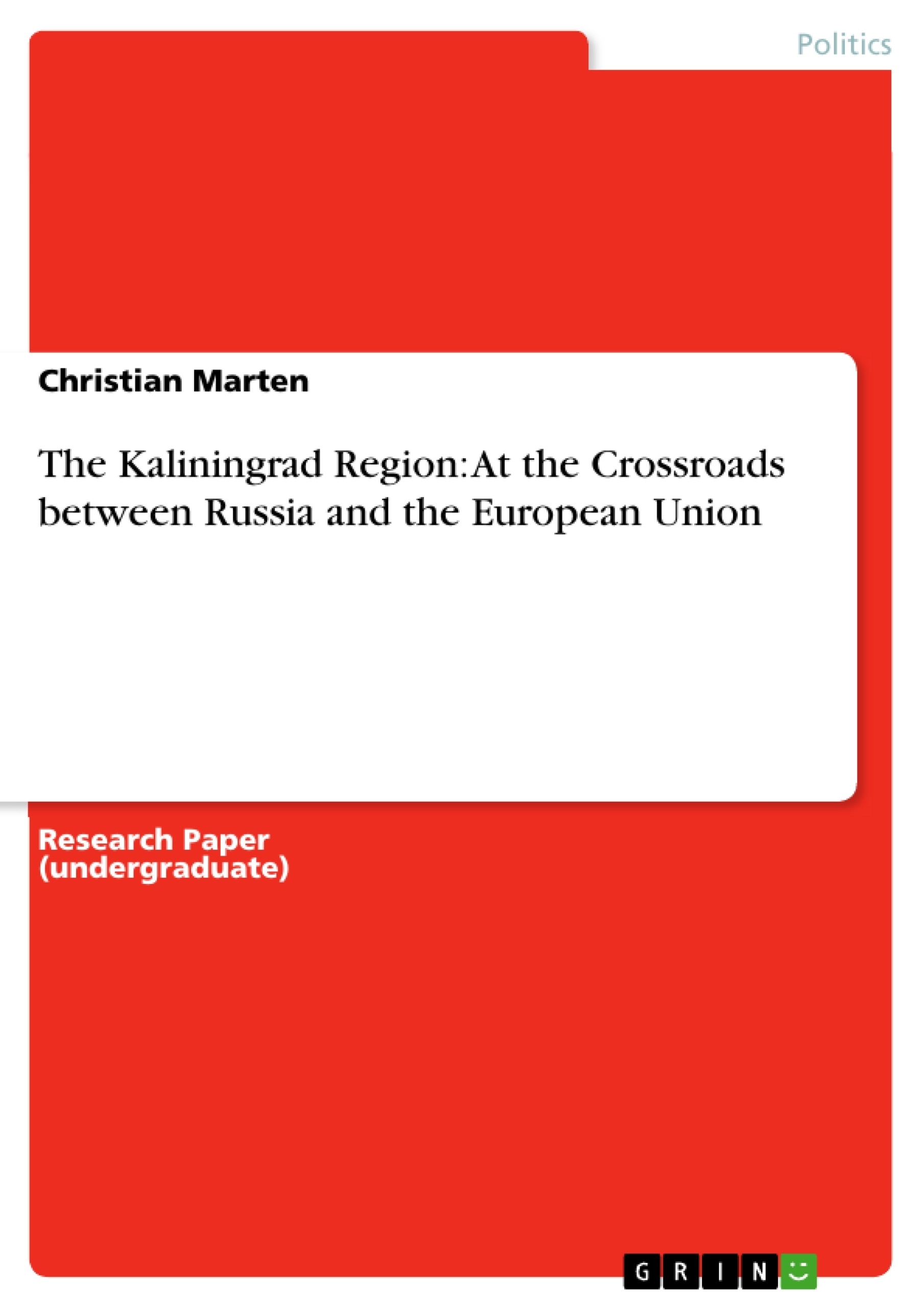The Kaliningrad region captures since the Middle Age a place as a trading center. The text describes its economical development since the Second World War until today and gives an overview about the actual economical conditions. Followed by an analysis over future economical trends for the region and the chances which can occur through a closer cooperation with the European Union.
Inhaltsverzeichnis (Table of Contents)
- ABSTRACT
- INTRODUCTION
- THE HISTORY OF KALININGRAD
- BEFORE 1990
- 1990 UNTIL TODAY
- THE KALININGRAD REGION TODAY
- ECONOMY
- POLITICS
- THE FUTURE OF THE KALININGRAD REGION
- CONCLUSION
Zielsetzung und Themenschwerpunkte (Objectives and Key Themes)
This paper analyzes the economic development of the Kaliningrad region from its history as a trading center to its current situation as a Russian exclave within the European Union. It focuses on the challenges and opportunities presented by its strategic location and the potential for economic growth through closer cooperation with the EU.
- Economic development of the Kaliningrad region since World War II
- The impact of the EU's eastward expansion on the region
- Challenges and opportunities for economic growth in Kaliningrad
- Russia's "Kaliningrad policy" and its influence on the region's future
- Potential for cooperation between Russia and the EU in the Kaliningrad region
Zusammenfassung der Kapitel (Chapter Summaries)
- Introduction: Introduces the Kaliningrad region as a key area in negotiations between Russia and the EU, highlighting its strategic importance despite its small size. It discusses the region's status as an enclave within the "Schengenera" and the influence of NATO enlargement and WTO expansion.
- The History of Kaliningrad: This chapter explores the region's long economic history, starting with its trading links to Rome in ancient times. It traces the development of Kaliningrad as a Hansa trading hub, its role as a center for trade with the Soviet Union, and its integration into the Soviet Union after World War II. The chapter details the post-war changes in population and economy, as well as the rise of military industry due to the Cold War.
- The Kaliningrad Region Today: This chapter examines the present-day situation in the Kaliningrad region, focusing on its economy and politics.
Schlüsselwörter (Keywords)
The main keywords and focus topics of this text are: Kaliningrad, Kaliningrad region, reforms, European Union, economic development, Russia, exclave, strategic location, cooperation, EU enlargement, NATO enlargement, WTO expansion, historical development, trade, military industry, transit.
- Quote paper
- Christian Marten (Author), 2010, The Kaliningrad Region: At the Crossroads between Russia and the European Union, Munich, GRIN Verlag, https://www.grin.com/document/144151



